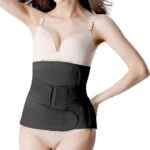Quick Facts About Breast Lift Surgery
- Principle Benefits: Enhanced breast shape and firmness, correction of sagging and elevated breast position for a more youthful contour
- Treatment Overview: A breast lift is typically performed under general anesthesia and the procedure takes on around 2-4 hours. It involves lifting and reshaping of the breast tissue, repositioning the nipple-areolar complex and removing excess skin
- Recovery Timeline: Initial recovery takes 1-2 weeks with most swelling subsiding within 6 months. Patients can return to light activities in a few days and resume more vigorous activities in 1.5 – 3 months
- Average Cost: According to RealSelf, the average cost in the Phoenix area for just a breast lift is $11,017. For a breast lift with implants, it is $16,833.
With the passage of time, most women notice appreciable changes in the appearance of their breasts that may not necessarily be associated with their age and/or fitness level. Pregnancy, breastfeeding, the effects of time on the skin’s elasticity, weight fluctuations and loss, gravity, smoking and genetics can combine to cause breasts that were once perky to droop or sag. Fortunately, these changes can often be effectively addressed with a breast lift.
- What Is a Breast Lift?
- What Are My Breast Lift Options?
- Where Are Breast Lift Incisions Placed?
- What Is the Breast Lift Procedure Like?
- What Can I Expect for Breast Lift Recovery?
- How Conspicuous Is Breast Lift Scarring?
- How Much Does a Breast Lift Cost?
- Will Breast Lift Surgery Inhibit My Ability to Breastfeed?
- Breast Lift FAQs
- Breast Lift Before-and-After Photos
What Is a Breast Lift?
A breast lift (mastopexy) is a cosmetic surgical procedure designed to rejuvenate sagging breasts by recontouring the tissue, tightening the skin, decreasing the size of the nipple-areola complexes (if needed) and raising them to a higher, more youthful position. The final outcome can be perkier breasts with a more beautiful and desirable shape.
Board-certified plastic surgeon Steven H. Turkeltaub custom-tailors every breast lift procedure to meet the specific needs and goals of the patient. If you are interested in mastopexy, he would be happy to meet with you to review your aesthetic concerns, discuss your options and formulate a personalized treatment plan to achieve the look that you desire.
What Are My Breast Lift Options?
 Women who elect to undergo a breast lift have several issues to consider before surgery, one of which is the desired ultimate breast size. A breast lift is designed to re-elevate the breasts to their proper positions, remove excess skin and reshape them to obtain a more attractive, youthful appearance. With all the changes made, the results can be breasts that may be up to a cup size smaller.
Women who elect to undergo a breast lift have several issues to consider before surgery, one of which is the desired ultimate breast size. A breast lift is designed to re-elevate the breasts to their proper positions, remove excess skin and reshape them to obtain a more attractive, youthful appearance. With all the changes made, the results can be breasts that may be up to a cup size smaller.
For those relatively happy with their size, a breast lift alone may suffice. However, in Dr. Turkeltaub’s experience, most women seeking to have a mastopexy also want a breast augmentation. Many of these women had always desired larger breasts and the need for a lift now provides the opportunity to pursue this enlargement. Others want to regain the volume they lost (plus more) in their breasts following pregnancy and breast feeding or as a consequence of considerable weight loss. In these situations, just lifting and tightening the breasts will reposition the remaining tissue but will not replace lost volume or strategic contours.
Breast implants will not only increase the size of the breasts, they can also produce a fuller contour, enhanced cleavage, rejuvenated firmness and a more youthful overall appearance.
A breast lift with implants is essentially two different procedures—a mastopexy and a breast augmentation—combined into one. Therefore, virtually all the factors that should be considered for a breast augmentation need to be evaluated when electing to use breast implants with the lift.
There are also women presenting with large droopy breasts who want not only a lift but also a substantial reduction in size. A mastopexy can accomplish this by removal of breast tissue concurrent with the lift. When the volume of tissue needed to be removed in order to obtain the desired smaller cup size exceeds an arbitrarily defined amount, this procedure would then be considered to be a breast reduction.
Where Are Breast Lift Incisions Placed?
Another issue to consider when deciding to receive a breast lift is the incision pattern required to obtain the contour improvements and rejuvenation. The type and extent of the incisions to be used for the mastopexy would be dependent on numerous factors including the severity of breast drooping, degree of excess skin, skin elasticity, current and desired breast volume, location of the nipple and preference of the plastic surgeon. The techniques to consider and select from in order to obtain the desired outcome include:
- Crescent lift. This approach involves the resection of a crescent of skin using an incision along the upper half of the areola. Indications for its usage are fairly rare—when there is the most minimal degree of skin laxity. Many don’t even consider this to be a true category of mastopexy.
- Periareolar mastopexy (also known as a purse string, circumareolar or Benelli mastopexy). Breast contouring, lifting and removal of excess skin are performed solely using an incision that goes around the ultimate border of the areola. (To learn more about this, read Periareolar Mastopexy: Sacrificing Shape and More for Less Incisions.)
- Lollipop mastopexy. This approach involves an incision that encircles the areola and then extends from there down to the fold beneath the breasts, resembling the shape of a lollipop.
- Inverted-T (also known as anchor shaped mastopexy). This is the most common breast lift approach employed for many reasons. It not only involves an incision that extends from around the areola and then down to the crease at the lower part of the breast but also for a variable distance along the inframammary fold as well—resulting in an anchor shaped incision. Among its many advantages over other approaches are its increased flexibility, enhanced accuracy and greater impact in the shaping, positioning and overall rejuvenation of the breasts which can lead to a far more natural-looking and attractive appearance.
During your initial consultation, Dr. Turkeltaub will discuss your mastopexy incision options as well as all other relevant information in complete detail.
What Is the Breast Lift Procedure Like?
Breast lift (mastopexy) surgery is performed as an outpatient, usually under general anesthesia. The procedure involves the removal of excess skin, resizing and lifting up of the nipple-areolar complexes and the reshaping and repositioning of the breast tissue for a rejuvenated breast appearance. The total treatment time will depend on several factors such as the particular technique used and whether or not breast implants are added. When a full inverted-T incision is employed along with the placement of breast implants, the operating time is typically about two and a half to three and a half hours.
A mastopexy can be combined with many other cosmetic procedures for more extensive and cost effective improvements. Breast lifts with or without breast implants are most often performed in combination with tummy tucks as part of a “Mommy Makeover.”
What Can I Expect for Breast Lift Recovery?
Following surgery, a snug dressing is placed and it is kept on for a few days. A supportive sports type bra is then worn day and night for at least two weeks. It is strongly recommended to wear a supportive bra on a regular basis to help impede the inevitable continuation of drooping of the breasts over time.
The post-operative discomfort experienced by most women undergoing a breast lift without implants is usually relatively minimal. If breast implants are inserted concurrently so as to obtain an enlargement, the course is similar to that of a breast augmentation.
Most women are able to engage in non-strenuous work and/or return to school within a few days to one week. You should avoid sports, aerobic exercise and other vigorous activities for at least three to four weeks following surgery.
How Conspicuous Is Breast Lift Scarring?
The final appearance of breast lift scarring will depend on factors such as:
- The surgical technique and incision closure method utilized
- The skills of the plastic surgeon
- One’s genetic makeup, natural healing process and diet
- The extent of adherence to prudent postoperative instructions
- Limitation of certain activities for at least eight weeks after surgery
- Which scar care products/treatments are used and when they are begun in the postoperative period
The mastopexy incision which Dr. Turkeltaub most commonly employs for significant breast drooping is the inverted-T which results in a scar extending from around the areola, then vertically down the breast and horizontally along the inframammary crease. Most bra and swimsuit varieties conceal this incision pattern, and in Dr. Turkeltaub’s experience, patients rarely have long term concerns about scarring once healing is complete—particularly when scar management and/or treatment recommendations are heeded.
How Much Does a Breast Lift Cost?
According to RealSelf—an online educational forum for aesthetic care—the cost of breast lift surgery in the Phoenix area is around $11,017. If the procedure is a breast lift AND an enlargement with implants, then the cost average is around $16,833.
Among the numerous components that can impact the exact price of mastopexy, some of the most influential factors include:
- The amount of skin removal and tissue reshaping required
- Whether or not breast implants are also placed
- If breast implants are used, are they silicone (more expensive) or saline?
- Whether or not treatment is combined with body contouring as part of a Mommy Makeover
- The plastic surgeon’s level of skill and experience
- Fees for the operating room and anesthesia
- Overnight facility costs if an extended recovery stay is necessary and/or not included
- Medications that may be needed pre- or post-operatively
- Where the practice is geographically situated
If you are interested in breast lift surgery, you can schedule a consultation with Dr. Turkeltaub. After examining your cosmetic needs and concerns, he can develop an individualized surgical plan and break down the fees associated with each facet of treatment.
Our practice also offers plastic surgery financing through various healthcare lenders in the event you wish to divide the cost of treatment into more affordable monthly payments.
Will Breast Lift Surgery Inhibit My Ability to Breastfeed?
Most women who are able to breastfeed prior to a mastopexy are still capable of doing so after treatment since there typically is minimal disruption of the milk ducts coursing into the nipple.* As with any breast procedure, however, there is always a risk that breastfeeding will not be possible for some patients. Surgical approaches that cause significant disruption of the breast tissue and ducts will have the greatest impact on whether or not breastfeeding is possible after a breast lift. The uncommonly used technique that involves the actual removal of the nipple-areola complex and its replacement back down as a “full thickness skin graft” will completely and predictably negate the ability to breastfeed.
If you plan to have children in the future and are hoping to breastfeed, Dr. Turkeltaub advises that you make this known at the time of your consultation. By disclosing this information upfront, you can make an informed decision as to whether you should proceed with breast lift surgery at this time or wait until you are finished having kids and are no longer nursing.
*The inability to breastfeed following mastopexy is sometimes wrongfully attributed to the surgery itself, when in reality the patient had never attempted to breastfeed prior to her procedure and was incapable of doing so in the first place.
Frequently Asked Questions About Breast Lift Surgery
Q: Where Will My Scars Be Located?
A: The location and extent of the breast lift scars depends on several factors including the degree of drooping. For the most minor of drooping and in very rare situations, it can involve just the top half of the nipple (mini-lift). The three major incision options available for a breast lift are the circumareolar (also called periareolar or Benelli) which just goes around the areola, the lollipop which goes around the areola and extends down to the crease, and the anchor (also called the inverted T) that also extends along the crease at the bottom of the breast. A variety of factors will determine which approach would be best for you.
Q: Do The Scars Heal Well?
A: They generally heal in an acceptable way and will fade somewhat over time. The final outcome would depend on multiple factors including genetics, skin color, surgical skill, adherence to recommended postoperative regimen including scar care. The trade-off for these scars are more perky, youthful appearing breasts.
Q: My Breasts Are Saggy But I Definitely Don’t Want Breast Lift Scars On My Breast. Will Dr. Turkeltaub Do Just A Breast Augmentation Without The Breast Lift?
A: With the rare exception being the mildest of situations, breast implants by themselves will not treat sagging breasts. What you would see is much of your breasts hanging off of the implants creating a bizarre appearance. Dr. Turkeltaub, therefore, will not perform your surgery if you elect not to undergo the necessary breast lift.
Q: Will I Lose Sensation In My Nipple?
A: There can be some loss of sensation in the nipples following a mastopexy though this is usually temporary. A vast majority of women retain most if not all of their sensation. It is extremely rare to have total loss of sensation.
Q: My Breasts Not Only Became Droopy After Pregnancy And Breastfeeding, But They Are Also Smaller Than They Used To Be. Can I Get Them Lifted And Enlarged At The Same Time?
A: Yes. Most women undergoing a breast lift also choose to have them enlarged as well.
Q: Is A Breast Lift Permanent?
A: No. Your breasts will continue to droop with time. This is due to the loss of elasticity of the tissues and the effects of gravity. If you maintain a stable weight and wear a supportive bra, the results will last longer.
Q: Can I Prevent My Breasts From Continuing To Sag?
A: Unfortunately, you can’t totally prevent your breasts from sagging with time but you can slow down the process. What can you do? Wear a supportive bra on a regular basis, minimize weight fluctuations, stay in a good nutritional state, and avoid tanning your breasts whether by the sun or in a tanning booth. There are other important factors that you have no control over including heredity, age and hormone levels. Large breast implants also will have a much greater impact on sagging compared to smaller ones.
Breast Lift Before-and-After Photos*
The following before-and-after pictures of actual breast lift patients at Dr. Turkeltaub’s practice showcase the outcomes and benefits of the mastopexy procedure in women needing a breast lift.
Due to social media policies, the following images have been censored. Please click on the button below to view the image.
*Individual Results May Vary
Contact Our Practice
To learn more about breast lift surgery, please read our breast lift FAQs (frequently asked questions) section and/or contact Dr. Turkeltaub to schedule an appointment.









